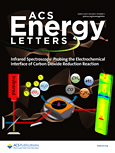
ACS Energy Letters
Scope & Guideline
Empowering Research for a Greener Tomorrow
Introduction
Aims and Scopes
- Energy Conversion Technologies:
Research on the development and optimization of technologies that convert energy from one form to another, such as solar cells, batteries, and electrochemical systems. - Energy Storage Solutions:
Studies focusing on materials and systems for energy storage, including batteries (lithium-ion, sodium-ion, etc.) and supercapacitors, with an emphasis on enhancing efficiency and lifespan. - Materials Science for Energy Applications:
Exploration of novel materials, including perovskites, nanomaterials, and polymers, that can improve performance in energy applications, such as photovoltaics and electrocatalysis. - Electrochemistry:
Investigations into electrochemical processes related to energy conversion and storage, including redox reactions, ion transport, and solid-electrolyte interfaces. - Sustainability and Environmental Impact:
Research addressing the environmental implications of energy technologies, including recycling of materials, life-cycle assessments, and sustainable manufacturing practices. - Interfacial and Surface Chemistry:
Studies examining the role of interfaces and surface chemistry in energy devices, focusing on charge transfer, stability, and degradation mechanisms.
Trending and Emerging
- Perovskite Solar Cells:
Research on perovskite solar cells continues to flourish, with a focus on enhancing efficiency, stability, and scalability, reflecting their potential to revolutionize solar energy generation. - Electrochemical CO2 Reduction:
There is a growing emphasis on the electrochemical reduction of CO2 to valuable products, indicating a shift towards carbon capture and utilization technologies as part of climate change mitigation strategies. - Solid-State Batteries:
Solid-state battery research is trending, driven by the need for safer and more efficient energy storage solutions, with a focus on novel electrolytes and anode materials. - Sustainable Materials and Recycling:
Emerging themes include the development of sustainable materials and recycling methods for batteries and solar cells, reflecting a broader commitment to circular economy principles. - Machine Learning and AI in Energy Research:
The incorporation of machine learning and artificial intelligence is on the rise, used for optimizing materials discovery, predicting performance, and enhancing the efficiency of energy systems. - Hydrogen Production and Storage:
Innovations in hydrogen production methods, particularly through water splitting and ammonia synthesis, are gaining prominence as hydrogen emerges as a key player in the future energy landscape.
Declining or Waning
- Traditional Fossil Fuel Technologies:
Research related to conventional fossil fuel technologies is becoming less prominent, as the focus shifts towards renewable and sustainable energy sources. - Single-Catalyst Systems:
There is a noticeable decline in papers focused solely on single-catalyst systems for electrochemical reactions, as more complex, multi-catalyst systems are being explored for enhanced performance. - Low-Temperature Processes:
Studies emphasizing low-temperature reactions or processes are waning, as there is a growing interest in high-temperature applications that can enhance efficiency and reaction rates. - Conventional Solar Cell Technologies:
Research into traditional silicon-based solar cells is declining as the field pivots towards more innovative technologies such as perovskite and tandem solar cells. - Basic Theoretical Studies:
The journal has seen a reduction in purely theoretical studies without experimental validation, reflecting a trend towards more applied research that combines theory with practical applications.
Similar Journals
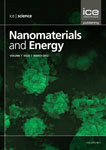
Nanomaterials and Energy
Bridging materials science and energy for tomorrow's solutions.Nanomaterials and Energy is a pioneering, peer-reviewed journal dedicated to advancing the field of nanotechnology and energy applications. Published by EMERALD GROUP PUBLISHING LTD from the UK, this journal serves as a vital resource for researchers, professionals, and students involved in energy innovation and materials science. With an ISSN of 2045-9831 and an E-ISSN of 2045-984X, it is indexed within Scopus and has witnessed its ranking currently placed in the Q4 category for both Energy (miscellaneous) and Materials Science (miscellaneous) for 2023, demonstrating its emerging role in these significant fields. Nanomaterials and Energy aims to explore the convergence of nanomaterials with energy systems, fostering interdisciplinary collaboration and promoting novel technologies that can address contemporary energy challenges. While not an open-access journal, it is acknowledged for its rigorous contributions to scientific knowledge, making it an essential publication for those at the forefront of energy and materials research. The journal’s accessible format and comprehensive editorial policy ensure it remains an influential platform through 2024 and beyond.
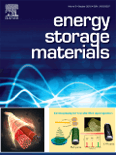
Energy Storage Materials
Innovating materials to power the future of energy storage.Energy Storage Materials, an esteemed journal published by Elsevier, serves as a pivotal platform for the advancement of knowledge in the vital fields of energy engineering, materials science, and sustainability. Established in 2015, it has quickly ascended to the top echelons of academic publishing, boasting an impressive Q1 ranking in categories such as Energy Engineering and Power Technology, Materials Science, and Renewable Energy, Sustainability and the Environment, all as of 2023. The journal's high impact factor underscores its significance and relevance, with Scopus rankings placing it among the elite in its domains. Through a commitment to rigorous peer review and open scientific discourse, Energy Storage Materials aims to foster innovative research and applications that address the global energy challenge. This journal is essential reading for researchers, professionals, and students dedicated to enhancing energy storage technologies and contributing to a sustainable future.

eScience
Championing Open Access for Global Scientific ProgresseScience, published by KEAI PUBLISHING LTD, is an innovative open-access journal that has rapidly established itself as a leading platform in the fields of Electrochemistry, Materials Chemistry, and Renewable Energy, Sustainability, and the Environment. Since its inception in 2021, eScience has garnered recognition for its high-quality research, achieving an impressive Q1 ranking in each of its primary categories as of 2023. With a remarkable Scopus ranking—placing it among the top percentile of journals in these disciplines—eScience serves as an essential resource for researchers and practitioners aiming to advance knowledge and application in sustainable practices and materials innovation. As an open-access journal, eScience supports widespread dissemination of vital research, ensuring accessibility for all, which is critical in addressing contemporary global challenges. The journal's commitment to fostering interdisciplinary dialogue and collaboration positions it as a cornerstone for those dedicated to pushing the boundaries of scientific discovery.
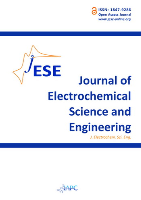
Journal of Electrochemical Science and Engineering
Advancing the Frontiers of Electrochemical Research.The Journal of Electrochemical Science and Engineering, published by the International Association of Physical Chemists (IAPC), serves as a vital resource for researchers and professionals in the fields of electrochemistry, materials chemistry, and chemical engineering. With an Open Access model since 2011, this journal ensures that groundbreaking research is freely accessible to a global audience, promoting collaboration and knowledge sharing. Situated in Croatia, it showcases cutting-edge developments while focusing on applied aspects related to electrochemical technologies. Notably, the journal holds a commendable Scopus ranking, placing it within the Q3 quartile for multiple categories, including Chemical Engineering (miscellaneous) and Electrochemistry. By fostering innovative research and comprehensive reviews, the Journal of Electrochemical Science and Engineering plays a crucial role in advancing the understanding and application of electrochemical processes, making it an indispensable platform for academics and practitioners alike.

Energy Materials
Unlocking the Potential of Materials for Energy Innovation.Energy Materials is a pioneering journal published by OAE PUBLISHING INC, dedicated to the dynamic field of energy materials science and engineering. With a focus on advancing knowledge related to materials used in various energy applications such as batteries, fuel cells, and solar cells, this open-access journal aims to disseminate cutting-edge research and innovative methodologies to a global audience. By offering a platform for original research, reviews, and case studies, Energy Materials plays a crucial role in bridging the gap between materials science and energy technology, facilitating the development of sustainable energy solutions. Researchers, professionals, and students alike will find invaluable insights in its pages, fostering advancements in this essential sector. To explore the latest developments in energy materials, visit Energy Materials at OAE PUBLISHING INC.

Advanced Energy and Sustainability Research
Pioneering Insights in Energy and SustainabilityAdvanced Energy and Sustainability Research is a leading open-access journal published by WILEY since 2020, dedicated to advancing knowledge and understanding in the realms of energy and sustainability. With an impressive impact factor and a commitment to high-quality, peer-reviewed research, this journal serves an international audience of researchers, professionals, and students passionate about addressing critical environmental challenges. The journal encompasses a wide array of topics within environmental science and energy fields, securing notable rankings in Scopus with top percentiles across several categories, including Ecology, Energy Engineering and Power Technology, and Waste Management. Given its open-access model, Advanced Energy and Sustainability Research facilitates the dissemination of cutting-edge research, enhancing accessibility and fostering collaboration within the scientific community. This journal not only plays a pivotal role in shaping public policy and industry practices but also aims to inspire innovative solutions for sustainable development in an increasingly complex world.

Advances in Energy Research
Catalyzing Change through Cutting-edge Energy Research.Advances in Energy Research is a prominent journal dedicated to the exploration and advancement of energy technologies and sustainable practices. Published by TECHNO-PRESS, this journal serves as a vital platform for researchers, professionals, and students in the energy field, featuring innovative studies and reviews that contribute to the body of knowledge surrounding energy efficiency, renewable resources, and the integration of new technologies. The journal holds a significant position in energy research and aims to facilitate the dissemination of groundbreaking findings and ideas that are pivotal for the transition toward a more sustainable energy future. Located in South Korea, with an ISSN of 2287-6316, it embraces an open access philosophy that ensures widespread availability of its content, further enhancing its impact in the academic community.
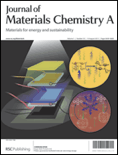
Journal of Materials Chemistry A
Empowering Research for Environmental ProgressJournal of Materials Chemistry A, published by the Royal Society of Chemistry, stands as a leading peer-reviewed journal in the fields of Chemistry, Materials Science, and Renewable Energy. With an impressive ranking within the top quartile (Q1) across these disciplines in 2023, this journal not only showcases groundbreaking research but also addresses pivotal challenges in sustainable materials and energy. Spanning from 2013 to 2024, it serves as a vital platform for scientists and engineers to present innovative solutions and advances in materials that directly contribute to environmental sustainability. Accessible to a broad audience, the journal's contributions are essential for anyone engaged in the development of new materials and technologies that promise to shape a greener future. With a commitment to high-quality open access publishing, the Journal of Materials Chemistry A is instrumental in disseminating impactful research to enhance scholarly communication and foster collaboration in an increasingly interconnected research landscape.

Batteries & Supercaps
Catalyzing Breakthroughs in Batteries and SupercapacitorsBatteries & Supercaps is a leading international journal published by WILEY-V C H VERLAG GMBH, dedicated to the advancement of knowledge in the fields of electrical and electronic engineering, electrochemistry, and energy engineering. With a remarkable Q1 ranking in multiple relevant categories, including Electrical and Electronic Engineering, Electrochemistry, and Energy Engineering and Power Technology, this journal serves as a vital resource for researchers, professionals, and students alike who are exploring innovative solutions in energy storage and conversion technology. As the demand for more efficient storage systems continues to escalate, Batteries & Supercaps provides a platform for high-quality research articles, reviews, and technical notes that contribute to the evolution of this dynamic field. Accessible globally from Germany, the journal promises to cultivate an engaging academic discourse on battery technology and supercapacitors through insightful contributions from a diverse array of experts. Join us in shaping the future of energy solutions and explore groundbreaking findings that pave the way for sustainable innovations.

Carbon Energy
Catalyzing interdisciplinary collaboration for global energy challenges.Welcome to Carbon Energy, an esteemed open-access journal published by WILEY that focuses on cutting-edge research in the field of energy and materials science. Since its inception in 2019, this journal has quickly established itself as a leading platform for disseminating impactful findings and innovations related to carbon-based energy solutions, renewable resources, and sustainability practices. With its impressive Q1 rankings in multiple categories—including Energy (miscellaneous), Materials Chemistry, and Renewable Energy—Carbon Energy is recognized for delivering high-quality, peer-reviewed content that meets the rigorous standards of the academic community. Through its open-access model, the journal ensures wide accessibility of research findings, making it an invaluable resource for researchers, professionals, and students alike. As we look toward the future, Carbon Energy aims to further its mission of advancing sustainable energy technologies and promoting interdisciplinary collaboration in tackling global energy challenges.